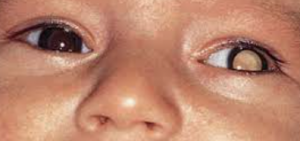Parents should be aware of the symptoms of an eye infection to enable prompt identification and treatment.
Eye infections can be serious and may cause permanent vision loss. Effective treatment is always needed, especially when bacteria, viruses, or fungi invade the eye or the surrounding areas. The most common eye infections that affect children are called Viral and Bacterial Conjunctivitis— both highly contagious.
Up to 1 in 8 of all children will have an eye infection each year.
Viral conjunctivitis (pink eye) is the most common cause of eye infections among adults and children combined.
Many children contract eye infections in daycare, school, and camp settings where there are many opportunities for germs to spread. Children and teens who wear contact lenses are more susceptible to eye infections.
If your child has an eye infection, keep them home until their infection has cleared to avoid infecting other children.
How do you know if your child has an eye infection?
Common signs and symptoms:
- Discharge that is green, yellow, or bloody
- Eyelids that are stuck together after waking from sleep
- Red eyes or eyelids
- Feeling that something is stuck in the eye
- Eye pain
- A white or gray sore on the iris
- Increased sensitivity to light
- Sudden blurry vision
- Fever, with no other cause
What causes an eye infection?
1) Bacterial conjunctivitis is a highly contagious, bacterial eye infection.
- Eyelids are stuck together upon waking in the morning or after a nap
- Presence of yellow or green discharge
- Whites of the eyes may be pink or red
- Eyelids are often swollen
- Affects one or both eyes
Your doctor will prescribe antibiotic eye drops to treat the infection. Your child should remain at home until the infection has cleared to avoid infecting their classmates.
2) Viral conjunctivitis (pink eye) is a highly contagious, viral eye infection.
- Generally affects both eyes
- Eyes appear pink and watery
- Itchy eyes
- Typically no sign of discharge
- Can appear with a fever, sore throat, and/or runny nose
What to do if your child has pink eye: Your child should remain at home to avoid infecting classmates. Take precautions so as to avoid infecting the other members of the house.
Pink eye usually resolves in three to seven days without any treatment and is no longer contagious once the tearing has stopped. Ice packs or artificial tears may alleviate some of the discomfort.
3) A blocked tear duct occurs when there is an obstruction of the tear duct, and the eye cannot effectively drain the tears. This condition presents in 10 percent of newborns.
- Affected eye continuously fills with tears that run down the face
- Eye becomes watery and irritated
- A secondary infection can result—causing redness, swelling, and a discharge
What to do if your child has a blocked tear duct: There is generally no treatment for this condition. A blocked tear duct usually heals on its own. However, if an infection is noted, seek medical care.
4) A Foreign object such as sand, dust, or dirt, can be blown into the eye, and cause an eye infection if not removed. These particles usually get stuck under the upper eyelid and over time, begin to infect the eye. The tell-tale sign of an infection is the presence of a discharge.
What to do if your child has a foreign object in their eye: If your child is in discomfort or there is a discharge coming from your child’s eye, make an urgent appointment with your eye doctor.
An infection can occur if foreign particles are not removed from the eye.
Inform your doctor of all your child’s symptoms because the underlying cause of the discharge may not be easily determined. An infection that results will not respond to antibiotic treatments without the removal of the foreign particles.
5) Orbital cellulitis is a deep infection of the eyelid and surrounding tissues. This infection usually spreads inward, and can occur from an upper respiratory infection, eyelid infection, or trauma to the eye.
- Swollen, red, painful eyelid
- Eye can be swollen shut or appear “pushed forward”
- Typically affects one eye
- With or without bus
- Fever
- Decreased vision
- Inability to move the eye
What to do if your child has orbital cellulitis: SEEK EMERGENCY MEDICAL CARE.
This type of infection is considered a medical emergency and must be treated promptly to prevent blindness, meningitis. Without urgent medical attention, this condition can be fatal. Your eye doctor will co-manage your child’s symptoms along with their primary care doctor.
Contact an eye doctor as soon as you notice symptoms of an eye infection.
SEE RELATED: Pink Eye or Allergies?
Less common eye infections
1) Trachoma is a serious eye infection that affects the inner eyelid. The infection leads to scarring and an “in-turning” of the eyelid— causing the eyelashes to damage the corneal tissue and over time causing permanent blindness.
This infection is spread by flies in unsanitary conditions, with the threat of reinfection a common problem. Good hygiene is crucial in preventing trachoma, and oral antibiotics are vital for controlling the infection.
2) Endophthalmitis is generally caused by bacteria from a penetrating eye injury, and is a serious inner-eye infection. In rare cases, this type of infection can occur from an eye surgery complication, such as cataract surgery.
Urgent medical treatment with strong oral antibiotics is crucial to prevent significant vision loss or even blindness.
Eye infections related to contact lenses
1) Fungal keratitis. Fungi can infect the front of the eye and cause severe inflammation of the cornea. Poor contact lens hygiene, or a penetrating eye injury, can cause a fungal infection in the eye.
2) Acanthamoeba keratitis is a vision-threatening eye infection, caused by a parasite that can enter the cornea of the eye through contact lenses.
Here are a few safety tips for contact lens wearers:
- Wash your hands before inserting or removing contact lenses
- Avoid wearing contact lenses in the pool
- Remove and disinfect your lenses according to your doctors’ instructions
When should you contact your eye doctor?
If you are concerned your child has an eye infection, do not wait— make an appointment with an eye doctor as soon as possible.
Do not try to self-diagnose!
Your doctor will determine the type of eye infection that your child is presenting with, in order to prescribe the most effective treatment. The earlier your child is seen, the sooner they can receive appropriate treatment.
Antibiotic eye drops or ointments are typically prescribed for a bacterial infection, while a viral infection generally has to just run its course. Most cases of conjunctivitis resolve within a week.
If a viral infection is severe, it may require antiviral eye drops to help clear the infection, or steroid eye drops to reduce swelling. Your eye doctor may also prescribe oral antibiotics or oral antiviral medications, depending on the underlying cause of the infection.
When is an eye infection an emergency situation?
If your child presents with any of the following symptoms, seek immediate medical care.
- Red or swollen eyelid(s)
- Moderate eye pain
- Blurry vision
- Fever over 104° F (40° C)
- If your child looks sick, or is acting differently
Caution: If your child has a fever and is less than 12 weeks old, DO NOT give them fever medication until they are seen by a doctor.
How can you prevent an eye infection?
To prevent an eye infection, try to avoid touching your eyes as much as possible. Wash your hands throughout the day, especially before touching your eyes. If your child wears contact lenses, educate them on the importance of washing their hands before inserting or removing their lenses.
In addition, wash towels and bedding frequently, and disinfect counter tops and door handles on a regular basis.
LEARN MORE: Guide to Pediatric Eye Conditions
If you think your child may have an eye infection, schedule an appointment with an eye doctor as soon as possible! Do not self-diagnose.
Eye infections can cause significant discomfort, however, when children are young, they are often unable to accurately express what is bothering them. The earlier the infection is treated, the sooner your child will receive the appropriate care and begin to feel better!










